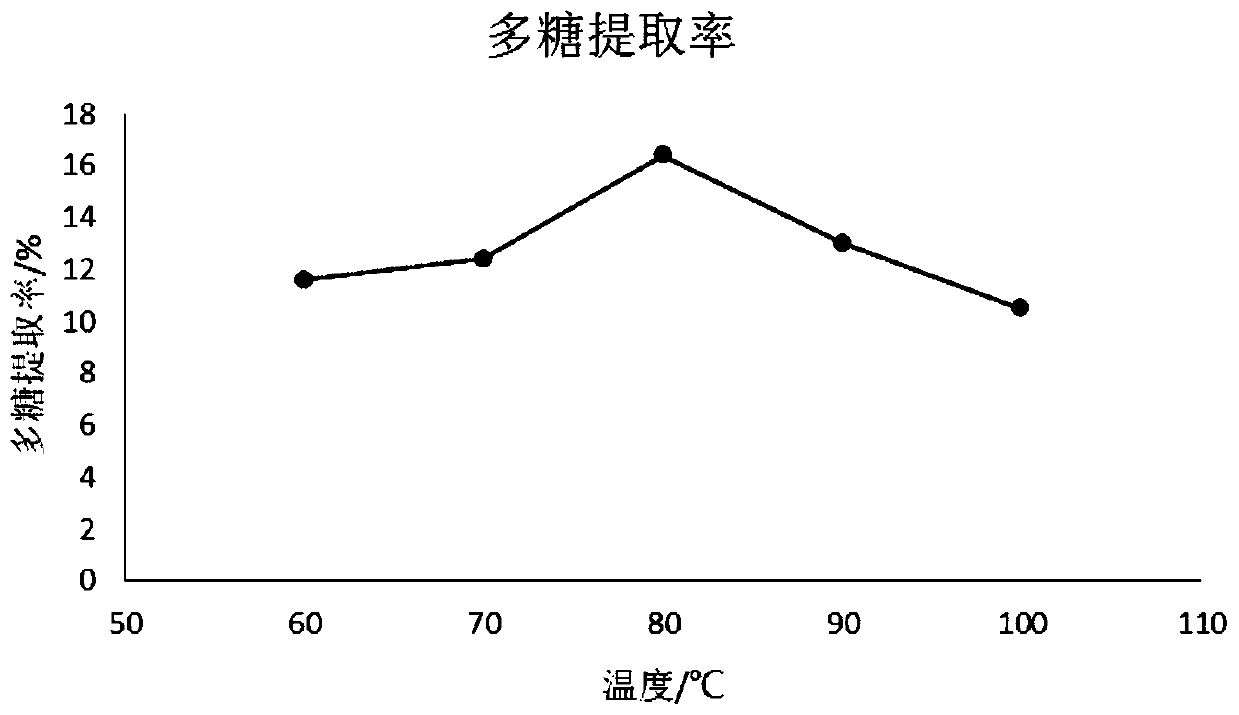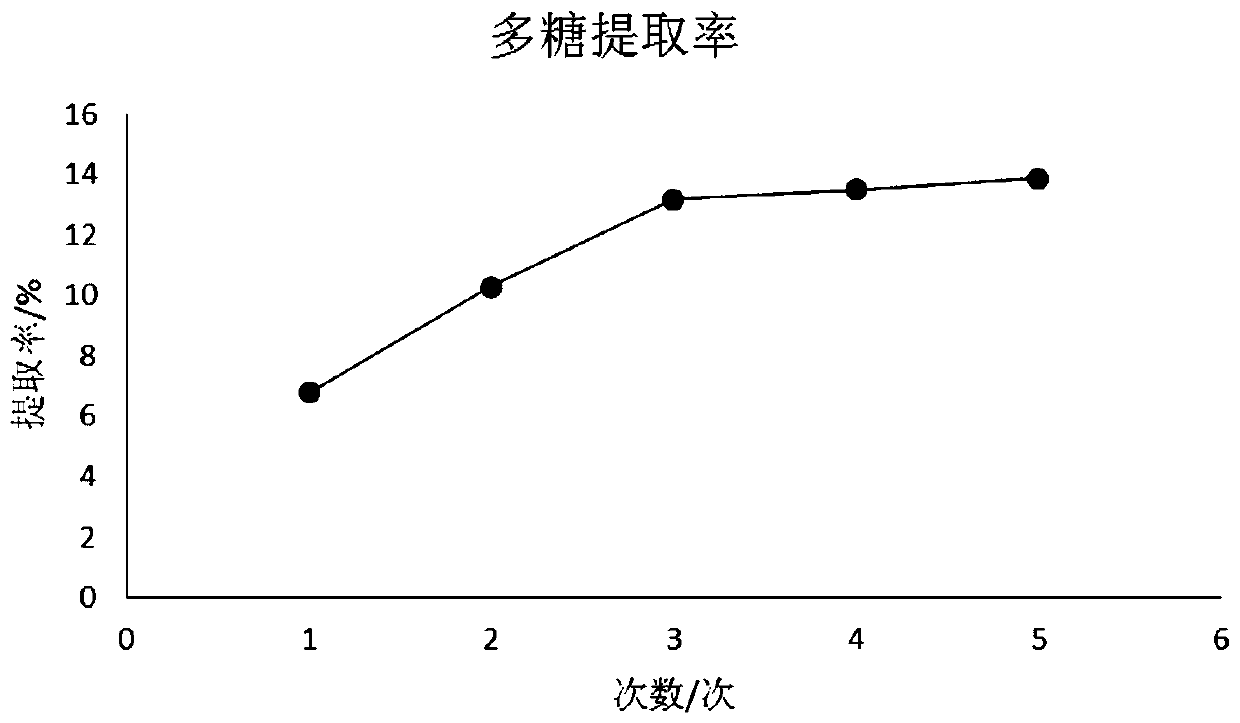A kind of hexaconia japonica leaf polysaccharide and its extraction method
An extraction method and a technology of Cordyceps sinensis, which are applied in the field of polysaccharides of Corydalis chinensis and its extraction, can solve the problems of severe acid-base extraction conditions, high industrial costs, complicated procedures, etc. high biological activity
- Summary
- Abstract
- Description
- Claims
- Application Information
AI Technical Summary
Problems solved by technology
Method used
Image
Examples
Embodiment 1
[0037] A method for extracting and separating short branches of Hexaphyllum leaves, comprising the following steps in turn:
[0038] (1) Accurately weigh 40 g of dried and crushed short-branched Hexaphyllum leaves, add 2000 mL of deionized water, reflux and extract twice in a water bath at 70°C, each time for 3 hours, filter while hot, and collect the filtrate;
[0039] (2) The filtrate is concentrated under reduced pressure in a rotary evaporator at 60°C until the volume is reduced to one tenth of its original volume;
[0040] (3) The concentrate was centrifuged at 3000r / min for 5min to remove solid residues and collect the supernatant;
[0041] (4) Take the supernatant, add 3 times the volume of absolute ethanol, let it stand overnight at 4°C to allow it to precipitate naturally, centrifuge at 3000r / min for 5min to collect the precipitate, and evaporate the precipitate to dry up the ethanol to obtain the short branch six Leaf polysaccharide;
[0042] The final result of th...
Embodiment 2
[0047] A method for extracting and separating short branches of Hexaphyllum leaves, comprising the following steps in turn:
[0048] (1) Accurately weigh 40 g of dry and crushed short-branched Hexagram leaves, add 2400 mL of deionized water, and extract twice under reflux in a water bath at 80°C, each time for 3 hours, filter while hot, and collect the filtrate;
[0049] (2) The filtrate is concentrated under reduced pressure in a rotary evaporator at 60°C until the volume is reduced to one tenth of its original volume;
[0050] (3) The concentrate was centrifuged at 3000r / min for 5min to remove solid residues and collect the supernatant;
[0051] (4) Take the supernatant, add 3 times the volume of absolute ethanol, let it stand overnight at 4°C to allow it to precipitate naturally, centrifuge at 3000r / min for 5min to collect the precipitate, and evaporate the precipitate to dry up the ethanol to obtain the short branch six Leaf polysaccharide;
[0052] The final result of t...
Embodiment 3
[0054] Change the reflux temperature to 60°C, 70°C, 90°C and 100°C respectively, and the other conditions are the same as in Example 2. figure 1 shown. Depend on figure 1 It can be seen that with the increase of temperature, the polysaccharide yield of Hexaphyllum brachyphyllum first increased and then decreased, and the yield was the highest at 80°C.
PUM
 Login to View More
Login to View More Abstract
Description
Claims
Application Information
 Login to View More
Login to View More - R&D
- Intellectual Property
- Life Sciences
- Materials
- Tech Scout
- Unparalleled Data Quality
- Higher Quality Content
- 60% Fewer Hallucinations
Browse by: Latest US Patents, China's latest patents, Technical Efficacy Thesaurus, Application Domain, Technology Topic, Popular Technical Reports.
© 2025 PatSnap. All rights reserved.Legal|Privacy policy|Modern Slavery Act Transparency Statement|Sitemap|About US| Contact US: help@patsnap.com



